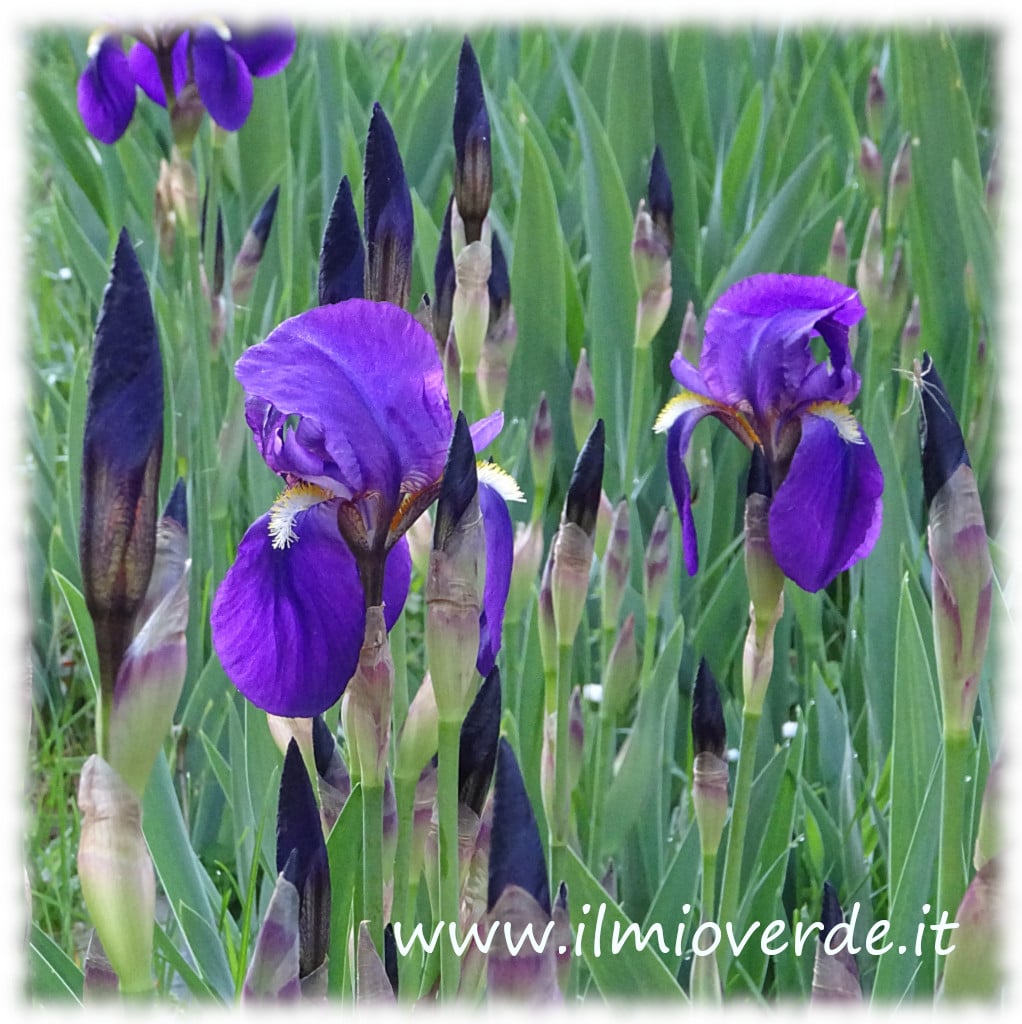Iris
The Iris is a fascinating and versatile plant, loved by gardeners for its beauty and the variety of vibrant colours it offers. With its elegant flowers, the Iris is perfect for adding a touch of colour and sophistication to any garden. Discover how these rhizomatous flowers not only beautify green spaces but are also resilient and easy to caIris: The Beauty of Rhizomatous Flowersre for, making them an ideal choice for gardeners of all levels.
Botanical classification
- Scientific Name: Iris spp.
- Family: Iridaceae
General characteristics
- Plant Type: Rhizomatous plants
- Height: Iris plants can vary from 30 cm to over 1 metre, depending on the species.
- Blooming: They bloom in spring and early summer, with flowers that can be blue, purple, yellow, white, and even red.
Habitat and distribution
Originating from various regions around the world, Irises thrive in a range of habitats, from meadows to woodland edges. They prefer well-drained soil and can tolerate dry conditions once established.
Cultivation and care of Iris
- Soil Preparation: They prefer well-drained, slightly sandy soil with a neutral or slightly alkaline pH.
- Planting: Plant the rhizomes in spring or autumn at a depth of 5-10 cm, with the top of the rhizome exposed.
- Watering: Keep the soil moist during growth but avoid waterlogging.
- Fertilising: Apply a balanced fertiliser in spring to promote healthy blooming.
- Pruning: Remove wilted flowers to encourage new blooms and trim dry leaves at the end of summer.
Pest and disease control
Watch for fungi and aphids; treat with fungicides or natural insecticides if necessary.
Dividing the Rhizomes
Every 3-4 years, divide the rhizomes to prevent overcrowding and promote plant health.
Varieties of Iris
- I. foetidissima: Is a hardy, ornamental perennial plant with long leaves and yellow-green flowers.
- I. germanica: Known for its large, fragrant flowers, often blue or purple.
- I. pallida: Famous for its delicate fragrance and lighter-coloured flowers.
- I. sibirica: Valued for its resilience and abundant blooms, with colours ranging from blue to white.
- I. pseudacorus: Known as the Yellow Flag Iris, it is ideal for wet areas and features bright yellow flowers.
Garden use
Irises are perfect for creating borders, flower beds, or rock gardens. They pair well with perennials such as Echinacea purpurea, Echinacea pallida, and Astilbe, creating a beautiful contrast of shapes and colours.
Curiosities
The name “Iris” comes from the Greek goddess of the rainbow, symbolising the variety of colours in its flowers. Additionally, Irises have been featured in numerous works of art and literature throughout history, representing beauty and purity.
If you’re looking for a plant that adds colour and beauty to your garden, the Iris is certainly a choice to consider. Try growing it and discover how this rhizomatous plant can transform your green space.
